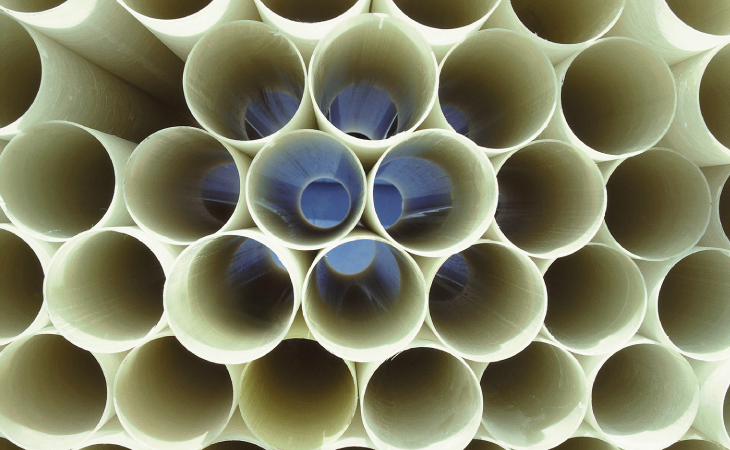This website uses cookies so that we can provide you with the best user experience possible. Cookie information is stored in your browser and performs functions such as recognising you when you return to our website and helping our team to understand which sections of the website you find most interesting and useful.
News
Flawed Science, Biased Agenda Defines Misleading Study on Safety of Plastic Pipe for Water Delivery
We are justifiably disappointed that Andrew Whelton, an associate professor at Purdue University in West Layfette, Indiana, and others are using the tragedy of the California wildfires to promote a biased agenda against plastic pipes. It is made worse by citing flawed “tests” to mislead the public.
The flawed science in the study begins with the use of samples that do not reflect real-world pipe performance whatsoever.
Specifically:
- To conduct his “tests,” Whelton cuts bits of material from each pipe that are smaller than a kernel of corn, rather than actually testing water-filled pipe or even a section of intact pipe.
- Whelton’s approach to heat tiny samples at fixed and extreme temperatures far beyond what pipes can operate at does not simulate dynamic combustion conditions that occur in real fires.
- Whelton further skews the leachate testing by drilling remnants of thermally degraded plastics into thin wall spirals to increase their surface area, thereby creating thin samples that would wildly exaggerate any surface-dependent results compared to how a thick-walled pipe section would behave.
- Whelton provides no rationale why intentionally shaving samples into thin sections somehow reproduces conditions in a real pipe. The stated reason to “equalize the surface area amongst the different materials” continues the failure to acknowledge that pipe at the testing temperature will no longer continue to hold shape as a pipe, nor water inside it. Without relying on an engineering analysis on how a pipe behaves in the simulated conditions he selected, Whelton falsely promotes his work as being representative.
- Whelton incorrectly attributes the contaminant levels found in the Santa Rosa and Paradise, California, water systems to be solely resulting from decomposition of plastic pipe. The shear mass of wood consumed in the fire used in the homes and growing in surrounding forest areas is the largest source of these contaminants.
- Whelton fails to test any other pipe materials than plastic to understand if any contribute to water contamination during wildfire conditions.
Summary
Whelton’s test heated tiny pipe fragments at extreme temperatures no plastic pipe can withstand, then shaved the remnant blobs into high surface area fragments to increase their extraction rate. Therefore, no credible conclusion can be drawn from this work on how the quality of drinking water delivered by a plastic pipe system would be affected after a fire.
More Failed Science, Bad Math: No Conclusions Possible
- As noted, like most construction materials exposed to these temperatures in a fire, drinking water pipes in-use would lose mechanical integrity. In the case of plastic pipes, they would collapse under the temperature he uses and ceases to be useful to convey water to a user.
- Whelton’s math is simply incorrect. PVC and CPVC pipes will lose their structural integrity and collapse above 130°C, and typically do not hold any pressure above 110°C, so his analysis of polymer performance between 200°C and 400°C is a flawed approach.
- Whelton provides no explanation why isothermal conditions represent real fire scenarios. Whelton cooks the plastic kernels at predetermined extreme and fixed temperatures to produce byproducts that his own technical references indicate would be vastly different under dynamic conditions where fire temperatures vary significantly.
- Whelton exaggerates any potential useful scientific conclusion into a flawed claim that dramatically overstates the exposure to heat and portrays an entirely unrealistic view of the potential for a plastic pipe to leach BTEX chemicals into water.
- Whelton’s most preposterous claim is, “The results of this study suggest that BTEX may have been formed in the intact, but thermally degraded, plastics and subsequently leached into the water.” Whelton provides virtually no scientific data that any BTEX would be formed in intact water pipes. The temperatures used in the study are extreme and do not represent temperatures at which plastic pipe would remain intact.
- No plastic pipe remains intact at the temperatures he performed his studies at. Whelton should know full well that an intact pipe will not yield the BTEX he claims it does. Whelton’s flawed experiment fails to prove that any BTEX is formed at temperatures where plastic pipe remains intact.
- If the concern is about safe water delivery, then the test should reflect meaningful conditions where water is still being delivered.
Flipping the Script
If similar logic were applied to ductile iron piping, the researchers would have taken a piece of ductile iron pipe and submerged it in an acid bath to simulate the effects of acidic soil. This would of course lead to the pipe dissolving and leaching heavy metals such as chromium. The same exaggerated approach to making broad claims would have led to a statement that “exposing ductile iron pipe to typical soil conditions can generate detectable heavy metals that remains in the pipe and ultimately leaches into the water.”
Closing Statement
Rather than to develop a fair scope of work along with the plastic pipe industry as a public health stakeholder, Whelton and his team have demonstrated a preference to represent their biased and self-aggrandizing “findings” as credible research, without any clear rationale for their actions. Ultimately, no one wins when drinking water is unsafe. The plastic pipe industry remains committed to ensuring public health through our high-quality engineered materials and products that enable water security for people around the world.


